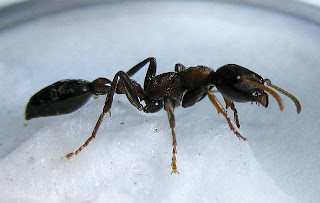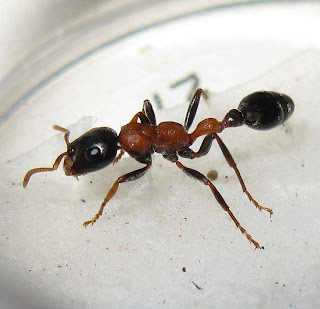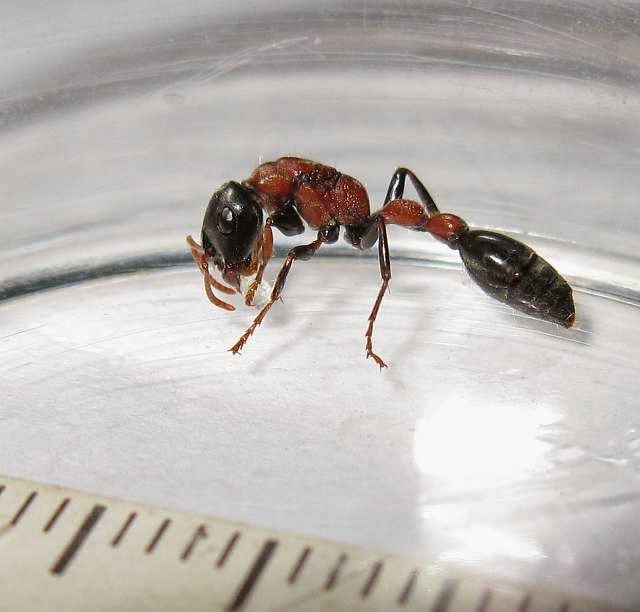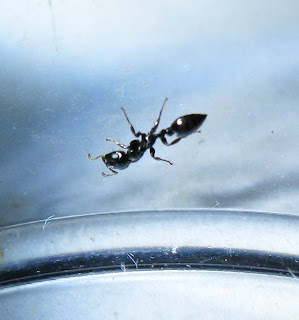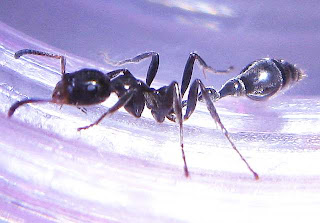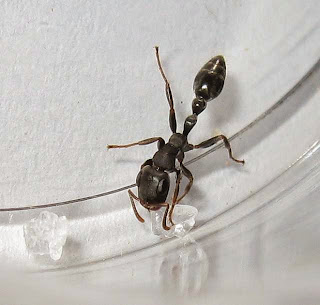Tetramorium are mostly monomorphic and polygynous ants ranging from slightly over around 2 millimeters to 6 millimeters in length. Many Tetramorium are daytime swarmers releasing their nuptial swarms during the day and their distribution are thus not affected by the night lights of human cities and towns.
Tetramorium ants.
Tetramorium ants.
Tetramorium ants.
Tetramorium ants.
Tetramorium sp2.
Tetramorium worker.
Tetramorium workers.
The gyne with workers and some alates.
A queen.
Tetramorium Sp3.
A small 3 millimeters species of Tetramorium.
A small species,
Another small species of Tetramorium.
Sp4.
A small species of Tetramorium workers and queen.
Male of Tetramorium ants.
Tetramorium ants tending the brood.
Sp11
A 2.5mm (TL) species
sp13
A dark brown species.
Dimorphic workers of Tetramorium sp(26). This is the first and only dimorphic species of this genus that I have encountered. This species is also unusual in that the workers (both minor and major) are atypically aggressive and will attack and sting when the nest is breached.
Taxonomy:
No rank: cellular organisms 131567
Superkingdom (Domain): Eukaryota 2759
No rank: Opisthokonta 33154
Kingdom: Metazoa 33208
No rank: Eumetazoa 6072
No rank (Subkingdom): Bilateria 33213
No rank (Branch): Protostomia 33317
No rank (Infrakingdom): Ecdysozoa
No rank (Superphylum): Panarthropoda 88770
Phylum: Arthropoda 6656
No rank (Subphylum): Mandibulata 197563
No rank: Pancrustacea 197562
Subphylum (Epiclass): Hexapoda 6960
Class: Insecta 50557
No rank (Subclass): Dicondylia 85512
Subclass (Infraclass): Pterygota 7496
Infraclass: Neoptera 33340
Cohort: Holometabola
Order: Hymenoptera 7399
Suborder Apocrita 7400
Infraorder: Aculeata 7434
Superfamily: Formicoidea
Family: Formicidae 36668
Subfamily: Myrmicinae 34695
Tribe: Tetramoriini
Genus: Tetramorium
Last Updated: 2022 03 04
Firsts Posted: 2011 09 29
© 2011 – 2022 Quah. All rights reserved.







































